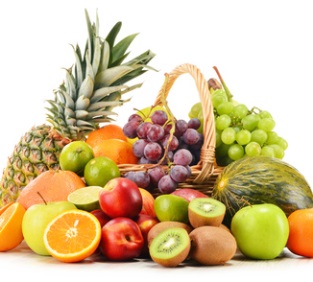
We’d like to talk about foods to eat for rosacea patients. As you may know, many foods can trigger rosacea symptoms or make symptoms worse in many people with the condition. Of course, you should avoid foods that make your symptoms worse, but then what do you eat? Especially when the list of possible trigger foods is so long, including everything from alcoholic beverages to caffeinated drinks, from the liver to spinach, from bananas to dairy products, it may begin to seem that everything is off-limits.
The Best Rosacea Diet
The best diet for rosacea needs to be customized for your individual needs. The best way to do this is to keep a food diary for several weeks or longer, logging everything you eat and any rosacea symptoms you experience. Then you can look for patterns and see which foods trigger your symptoms and which do not.
There are some general guidelines you can follow, however.
- Eat a well-balanced, healthy diet that includes lean protein, foods high in calcium (dairy products trigger rosacea symptoms in some people with the condition, so try alternative sources of calcium, discussed more below), fresh fruits, and vegetables, and whole grains.
- If dairy foods make your rosacea symptoms worse, try alternative sources of calcium which are better foods to eat for rosacea, like sardines, tofu, figs, apricots, broccoli, and almonds.
- Avoid hot beverages. Try iced coffee and iced tea instead.
- Switch to decaf coffee, tea, and cola, in order to help manage your rosacea symptoms.
- Drink plenty of water.
- Eat room temperature or cold foods if hot foods (hot in temperature, not hot meaning spicy) make your symptoms worse. This does not have to be as limiting as it might at first seem. See the ideas below.
- Use mild spices in meat dishes and other foods.
- Avoid alcoholic beverages. Drink non-alcoholic versions of your favorite drinks, instead.
Cold Foods to Eat For Rosacea

If hot foods trigger your rosacea symptoms, try some of these meals.
- Cold sandwiches.
- Cold soups.
- Cold salads. Think beyond lettuce, other veggies, and cold chicken. Add fruit, nuts, other cold meats, cold tofu, seeds (sesame seeds are a good source of calcium), non-dairy cheese (look in the health food section of your grocery store), and beans (avoid lima beans and navy beans, as these trigger rosacea symptoms for some people).
- Cold pasta salads or salads made with grains, like tabouli, a Mediterranean salad (it often contains tomatoes, but you can leave those out if they trigger your symptoms).
- Cold cereal with soy, almond, or coconut milk.
- Refrigerator oatmeal. You can find all sorts of wonderful recipes online, but basically, you combine equal amounts of oatmeal and soy or almond milk in a jar with a lid, along with any fruit, nuts, sweetener, seasonings like cinnamon or vanilla, and other ingredients you like (consider flax or chia seeds for added nutrition and texture). Shake it all up, then chill in the fridge overnight. In the morning, it’s ready to eat.
What if You do Eat Something That Triggers Your Symptoms?
If you eat something you should have avoided your diet for rosacea, you can treat your skin with something that will reduce redness and inflammation and help relieve symptoms. We like the Zenmed Skin Support System, which includes an anti-redness mask, gentle cleansing cream, and support serum, all made from natural botanical ingredients that naturally reduce symptoms of rosacea. In addition to a diet of the right foods to eat for rosacea, these specialized skincare products can help you manage your rosacea symptoms. To learn more about the Zenmed Skin Support System, just follow this link to the Zenmed Website.
